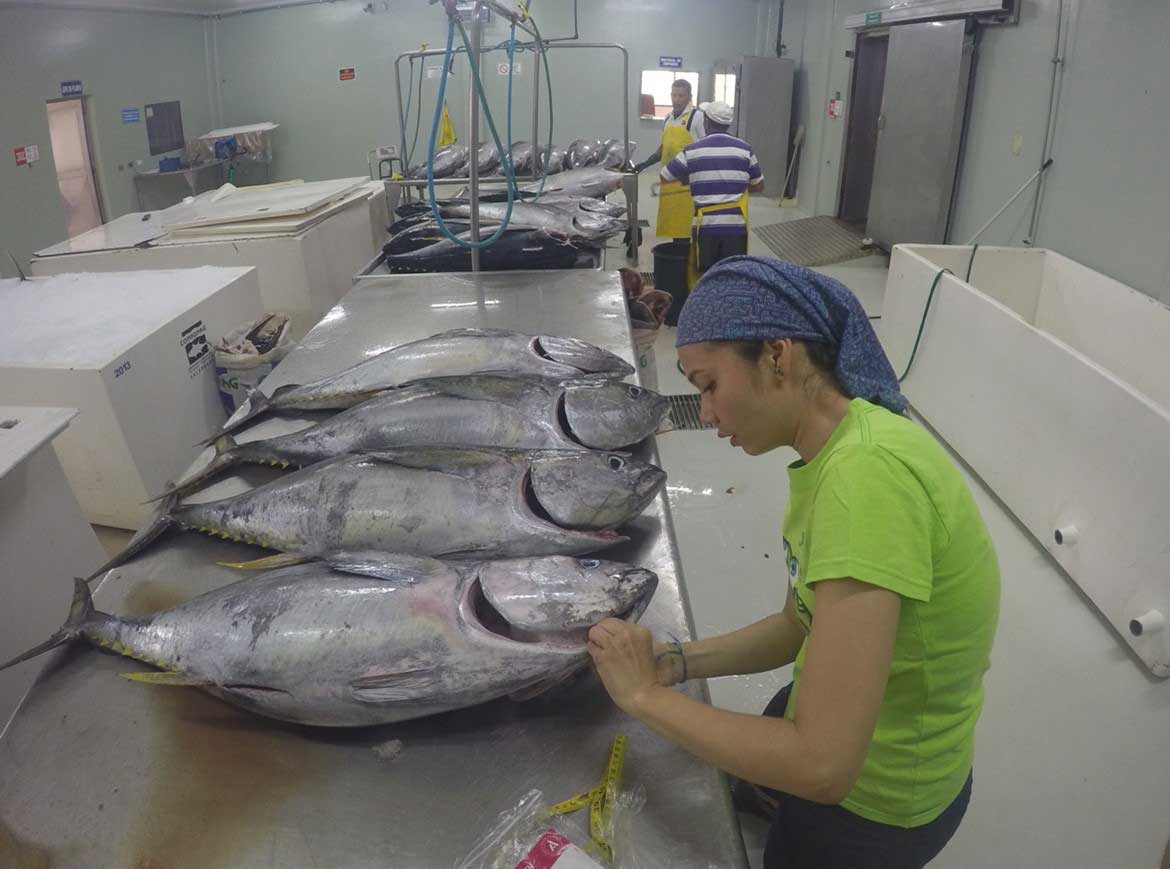Conservation and management of coastal spawning areas of yellowfin tuna in Galápagos and continental Ecuador
Project Leader:aia Muñoz - Abril
Project Details
Background:
The second most fished member of Scombridae in the world is yellowfin tuna, Thunnus albacares. It is a top predator that lives in tropical and subtropical waters and some of the only teleosts that have developed physiological thermoregulation mechanisms to keep their muscles hotter than the surrounding water. Due to the characteristics of the species and other factors such as the fishery, it has been reported that populations of yellowfin tuna from different oceans have fragmented, which constitutes a threat to the species and its habitat, as it makes them more sensitive to extinction. Removing top predators from the marine ecosystem can cause trophic cascades and reorganization.

Ecuador is among the 10 countries that fish the most tuna worldwide and has the second-largest tuna fleet in the Eastern Pacific. Alongside fishing, there are other factors that affect commercial tuna populations: Ocean warming caused by climate change is the cause of the decrease in the productivity of marine fisheries and the potential for sustainable catches, keeping in mind that overfishing decreases the resilience of marine fish and invertebrates to climate change. Pollutants are also part of the threats to the ecosystem. Among them, the most commonly found today are heavy metals and plastics, which have harmful effects on the species.
Objectives:
The objectives of my research are to find the spawning grounds of yellowfin tuna around the Galapagos Marine Reserve, estimate the size of sexual maturity of this species, determine their reproductive seasons using a representative sample of individuals captured by the country’s industrial and artisanal fleet, and evidence the possible effects of ocean warming on the reproduction of this species using laboratory experiment with larvae.
Funding Sources: Russell E. Train Education for Nature Program, World Wildlife Fund, University of South Alabama
